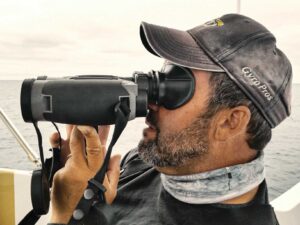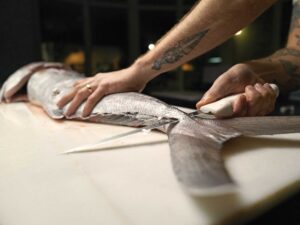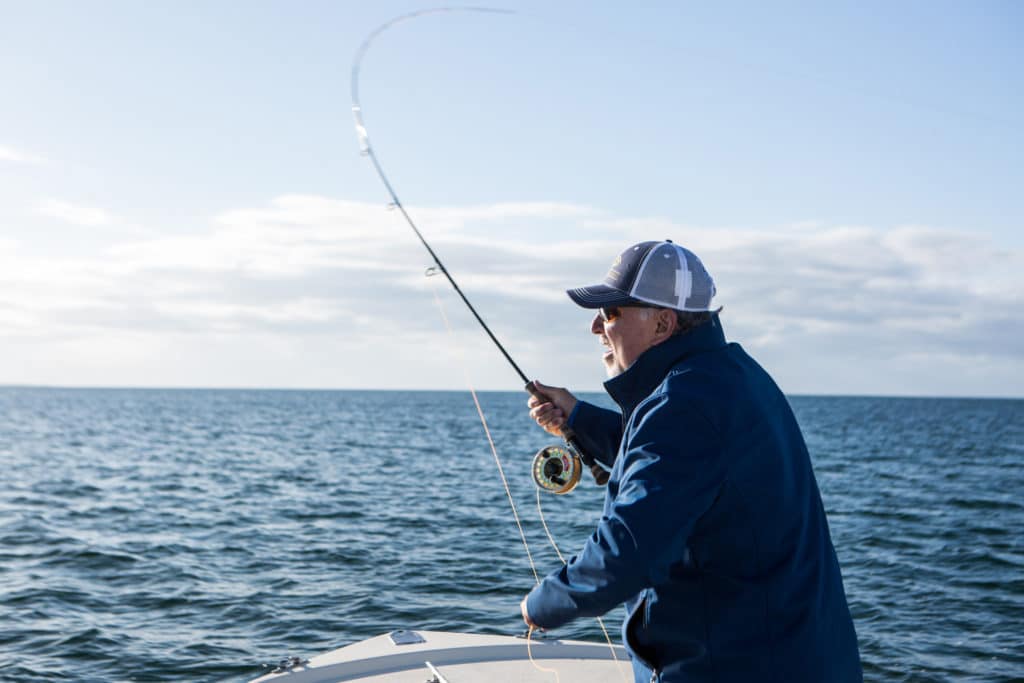
Casting heavy flies has a way of humbling even seasoned fly casters. After all, classic casting techniques use fast line speeds to toss small, lightweight flies through the air. But when you tie on a meaty streamer or a crustacean imitation with heavy lead eyes, you quickly discover that such flies exert their own pull on the fly line. You feel a kick when the line turns over and, frequently, a knock on the forward stroke when the fly smacks your rod tip or the back of your head.
Adjusting your casting technique can help you avoid such collisions. Slowing your casting stroke lessens line speed — easing the snap of a heavy fly turning over — and lets the rod load lower down the blank, in the more powerful midsection. Using a Belgian cast, which maintains a more constant tension on the line and lure, is another winning strategy when casting heavy flies.
But not everyone is able to successfully make sudden adjustments to their casting, so some fly rod manufacturers came to the rescue, designing specialty rods to help fly anglers get over the hurdle and focus on catching fish. Wielding one of these five rods should enable you to throw chunky patterns without injury to yourself, your gear or your surroundings.
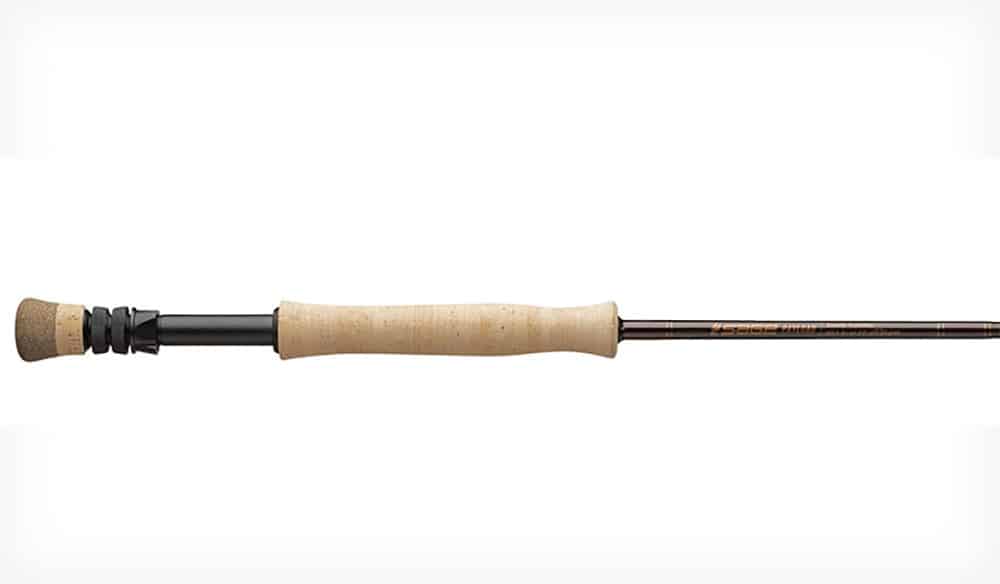
Sage Payload
This rod series is designed to make it easy to load down low to better control heavy flies. It uses a larger-diameter blank (0.4 inches just above the handle on the 9+ weight model) and high fiber density to create a strong, powerful rod that helps anglers fire off big streamers and lift sinking lines off the water.
That super-duty construction makes the Payload a bit heavier than some other rods, but not as much as you’d expect (that same 9+ model registers less than five ounces), given its bazooka-like muscle. That’s because Sage’s Konnetic Technology uses multiple graphite types and patterns along the rod’s length, allowing designers to use less material overall, while preserving strength. For more details visit sageflyfish.com
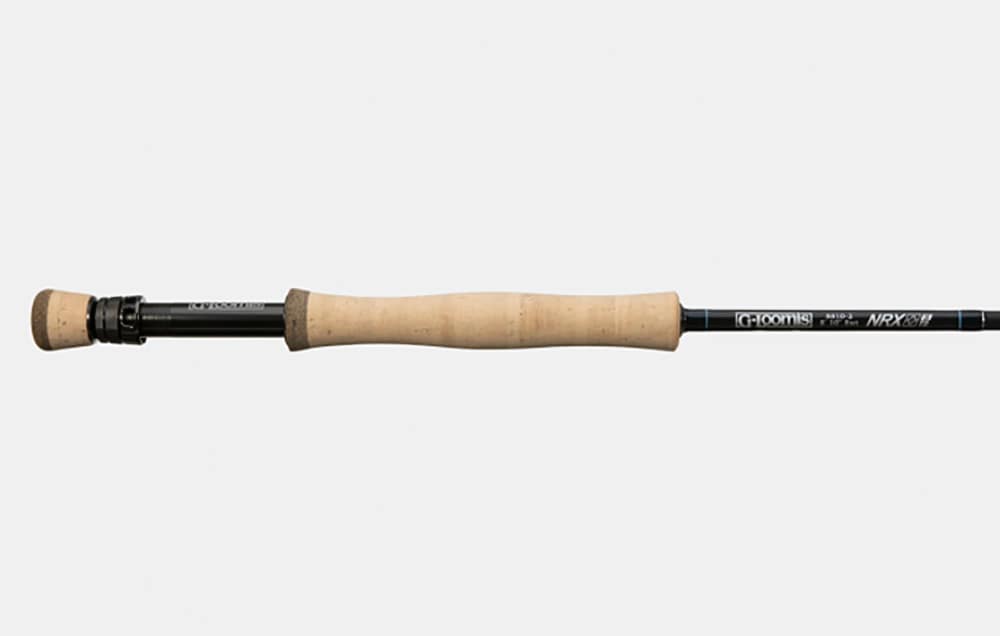
G. Loomis NRX+ SP2
The NRX+ T2S series combines a unique fusion of materials, technology, and innovative design. Dynamic Recovery Technology provides great power, line speed, and loop stability without sacrificing the feel and finesse desired for in-close shots. Mega Modulus+ graphite matrix and GL8 resin make the rod surprisingly light, reducing angler fatigue over a long day of repetitive casts.
Multi-Taper Design, described by Loomis as a series of micro tapers within the rod’s overall taper, permits using more material on potential break points and less everywhere else. The company built a custom rolling table for this, helping to achieve a perfect balance of durability and performance, and crisp actions with a smooth, fast recovery, to let anglers punch through the wind and deliver bulky flies to distances from 25 to 100 feet.
All NRX+ T2S rods measure 8′10″ and come in a two-piece configuration for one-piece-rod performance with added portability.
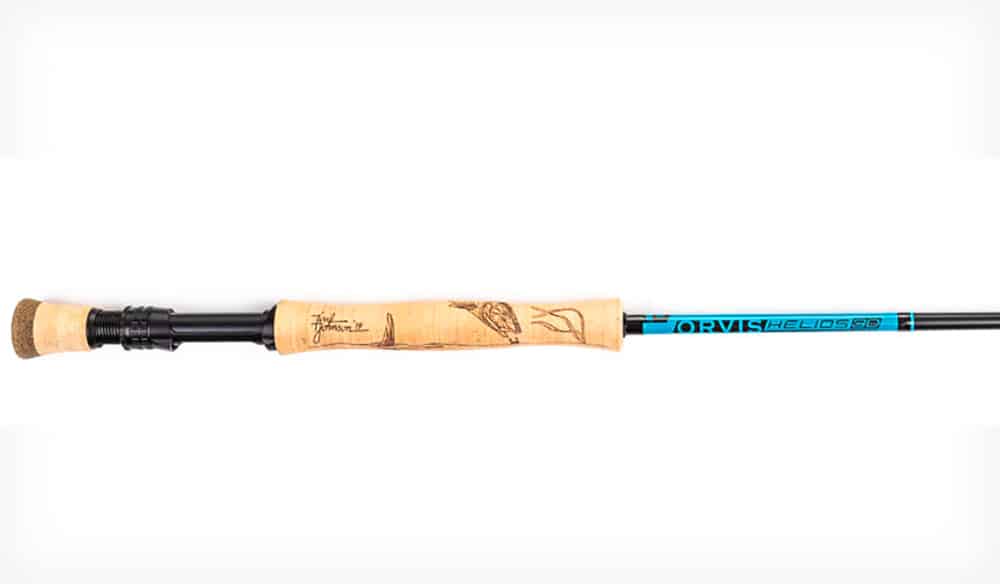
Orvis Helios 3D
Not interested in collecting a whole palette of rods for specialized applications? Choose the Helios, which performs incredibly well in an array of differing scenarios, including big-rig shootouts. That’s because the H3 was designed to adapt to a spectrum of casting styles—so if you slow down your stroke and open up your loops to accommodate huge streamers, you’ll still enjoy plenty of power and energy.
This rod, nevertheless, is also dazzlingly light (3.75 ounces for the 8-weight) and resistant to breakage. Helios designers prioritized the rod’s hoop strength, which lets it bend without snapping. It’s all achieved with Orvis’s patented system of thermoplastics that let designers use less graphite and scrim—while preserving or even improving rod strength. For more details visit orvis.com
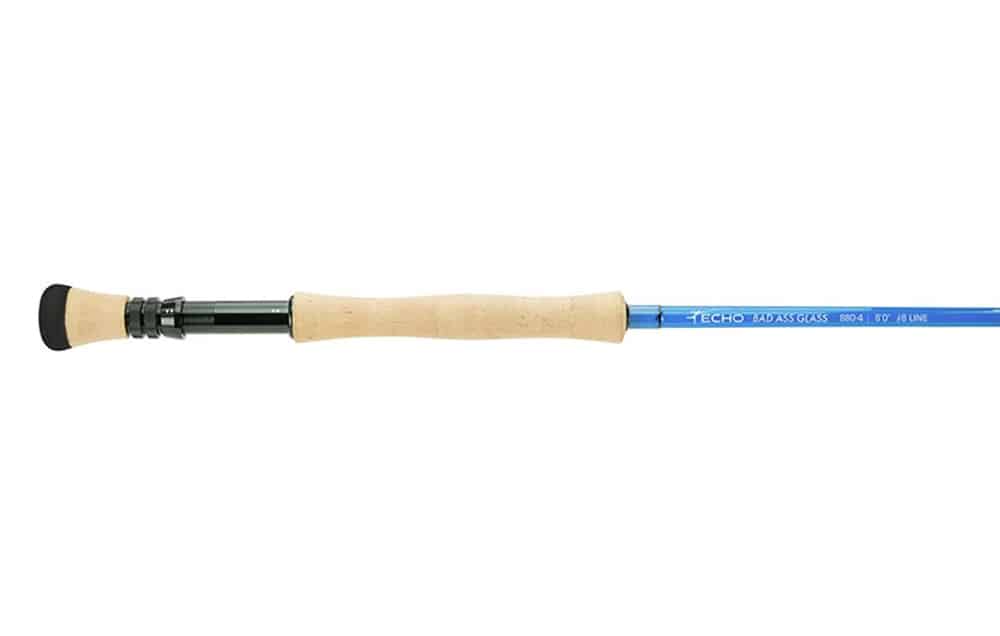
Echo Bad Ass Glass
This fiberglass rod has the durability to survive hits from weighted flies (fiberglass resists cracks and chips better than graphite or carbon), and enough flex to let anglers easily access the mid- and butt-sections while casting.
The rods are 8 feet long, and the action is slower than the superfast norms for graphite rods, but fast by fiberglass standards, so it still generates plenty of line speed. And the material’s elongated fibers make it helpful for throwing big flies and fighting weighty quarry: They absorb the shock of a surging fish or a snapping fly, so you’re less likely to break the tippet. Full details at echoflyfishing.com
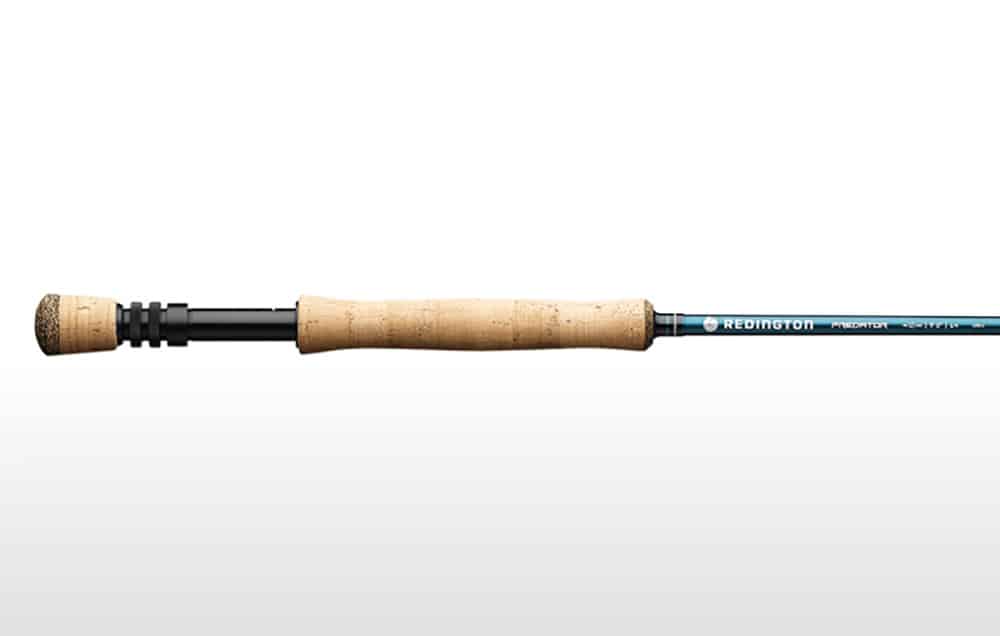
Redington Predator
A killer value at $350, this big-leaguer deserves a place in your rod quiver because it doesn’t try to be your do-it-all. It’s optimized specifically for fat flies and heavy lines, with a stout butt and a superfast midsection that can chuck massive flies across long distances (tradeoff: the tip isn’t designed for close-range tosses).
All components are saltwater ready, and the rods incorporate a powerful butt section to help turn big, fired-up fish. The heftier sticks, 12-weight and up, weigh over 5 ounces, but unless the situation requires constant casting (fishing for tarpon and other large game usually doesn’t), fatigue shouldn’t be a major issue. For more details visit redington.com

